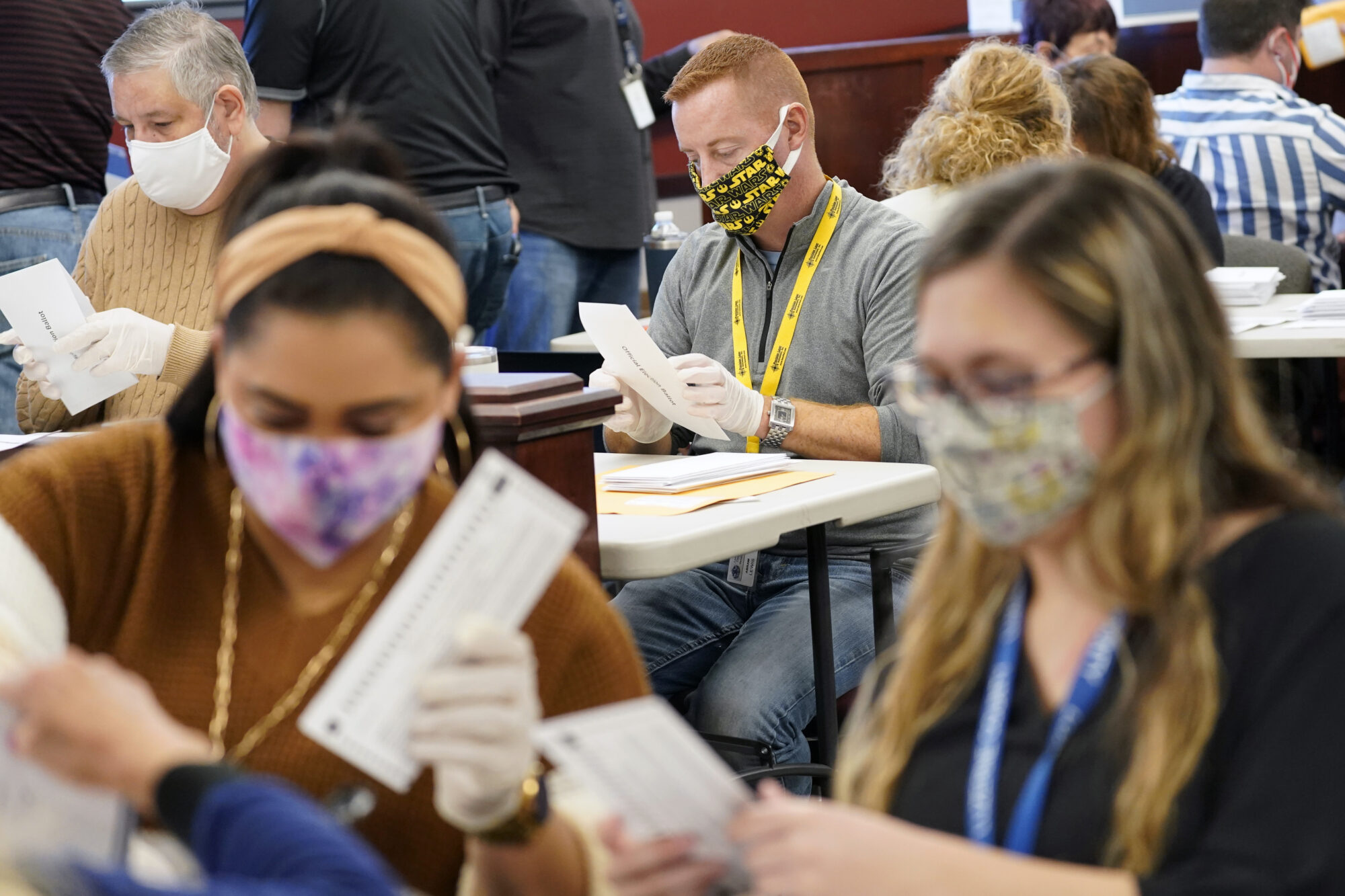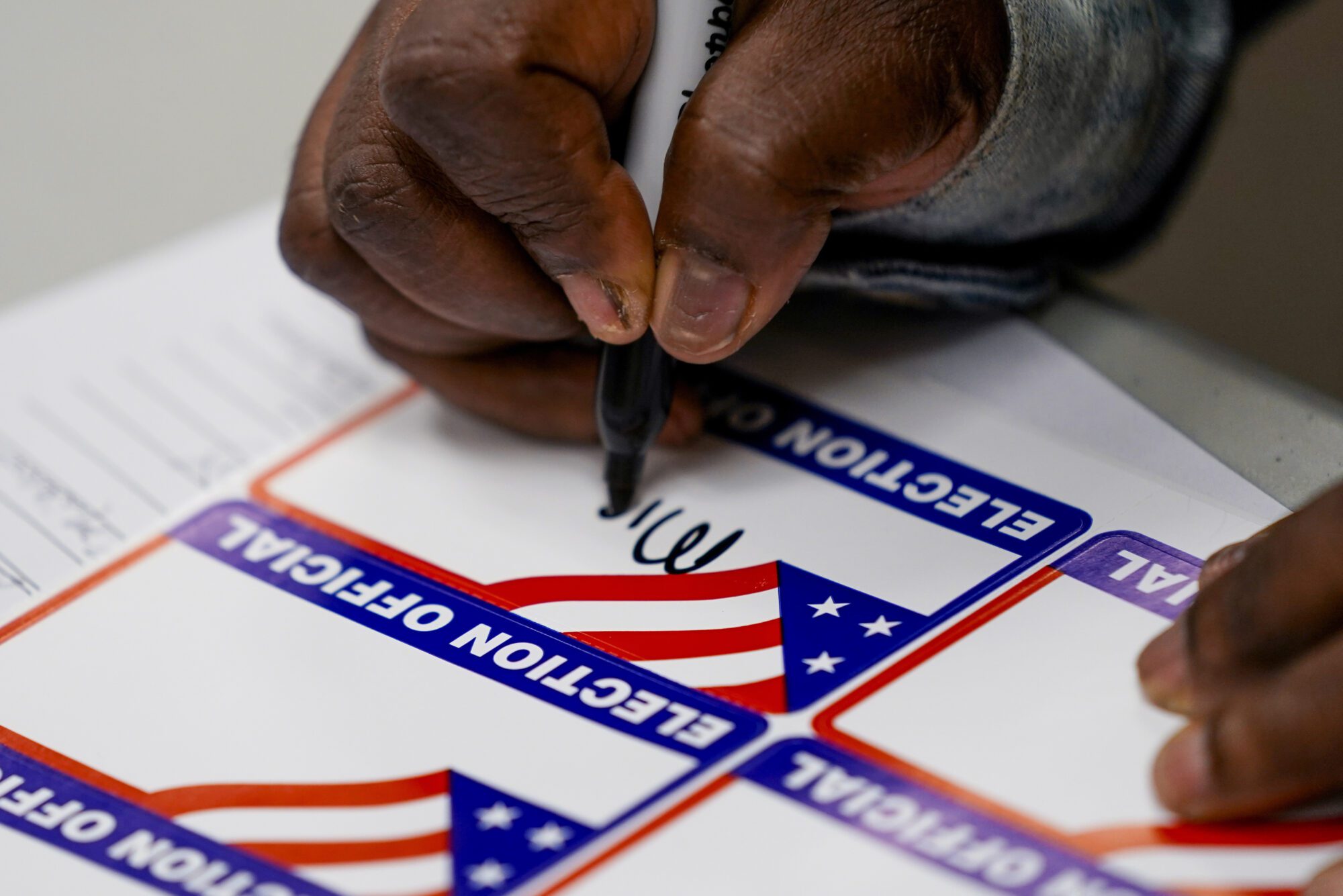Election Data Is Vital to Voting Rights. So Why Is It So Hard to Track Down?
Analysts spend countless hours and resources compiling the precinct-level results they need for litigation and research. They want legislation to force states to make it all accessible.
| April 12, 2024

Michael Pernick, a voting rights lawyer at the NAACP Legal Defense Fund, depends on precinct-level election returns to bring many of his lawsuits. He needs that granular data to analyze whether local election rules are having a racially discriminatory effect. But New York has no centralized database of precinct results. For local elections, many jurisdictions maintain their own data and often don’t even report it up to their counties, let alone the state.
Practitioners like Pernick need to go town by town, village by village, collecting and cleaning data themselves, often spending hundreds of hours on mundane tasks just to get this basic information. That is, if local election offices are even willing to provide it in the first place.
School districts across New York are especially prone to discrimination because they often use at-large voting systems that can marginalize residents of color, Pernick explained. But the lack of accessible data poses obstacles to investigating them. “There’s something like 700 school districts across New York and the only way to do an analysis of those school districts is to go one-at-a-time and send an open records request to each one,” Pernick told Bolts. “There could be confusion and delay in responding to requests that could push back even the beginning of an investigation by months.”
“Because of these challenges in identifying and gathering data, we knew that in some jurisdictions where there is racial discrimination in voting, it would be difficult or even impossible to prove it,” he added.
Perry Grossman, director of voting rights at the New York Civil Liberties Union, shares Pernick’s frustration at the countless hours his team has poured into data gathering, often dealing with resistant or unresponsive local offices. “I shouldn’t have to threaten to sue counties to get this data,” he said.
The New York Senate passed legislation in January that would mandate a centralized state election database that anyone could access. But the bill has since languished in the Assembly, leaving its champions anxious that the problems may endure well past the next round of elections this fall.
And the problem extends far beyond New York. Precinct-level election data underpins a world of election analyses. It’s a foundation for Voting Rights Act lawsuits throughout the country. Proving how badly maps are gerrymandered is impossible without this data, since it’s needed to assess districts’ partisanship. It’s also used to make all sorts of maps, graphics and tools of neighborhood partisan trends. And combining precinct partisanship data with demographic, geographic and income data is used to address a wide range of political science questions, including showing that voter fraud claims in the 2020 election were unfounded.
Yet there is no entity in the United States that records election returns or maintains boundary maps for the country’s 180,000 precincts. Many states don’t even provide this data for the full collection of precincts within their borders. Instead, universities, newsrooms, nonprofits and volunteers collectively spend thousands of hours after every major election gathering it themselves.
It’s a Herculean task for organizations that are often short on time and resources, and leaves the people who need precinct data at the mercy of individual county or local election offices whose data quality varies drastically. It also burdens underfunded election officials who are inundated with repeated requests for the same data.
Some states make this process a lot easier than others. For example, Minnesota’s secretary of state’s office posts the entire state’s precinct-level election results together on its website; it also provides digital maps of precinct boundaries, called shapefiles.
The variation between states was captured in dramatic visual form in a project published by The New York Times after the 2020 election. A team of journalists, data scientists, and developers set out to produce a map of U.S. precincts, color-coded by how each voted.
Four states on the map—Alabama, Alaska, Louisiana, and Virginia—are completely blank, as are large swaths of Idaho, Kentucky, and Missouri.
It took The Times three months of full-time data and software development work to assemble the data after the election, plus months of preparation ahead of election night, according to Miles Watkins, who helped manage the project. “As of when we published the nationwide map, I feel pretty confident that we were using every single piece of open data or FOIA-able information that we could,” he told Bolts. But even with that effort, one of the best-staffed publications in the nation wasn’t able to obtain the data to complete the map.
Ultimately, over 10 percent of all votes cast in the election weren’t pictured in the map.
One problem that proved intractable was that some counties report a combination of their mail-in, early, and provisional ballots as one lump total, rather than distributing them based on where voters reside at the precinct-level. This practice prevents analyses of voting patterns at a more granular level, as was the case in the four completely blank states in The Times’ map.
Zach Mahafza, an analyst at the Southern Poverty Law Center who investigates voting rights violations in the South, says this lack of precinct data often stalls his efforts. In 2021, he was part of a team looking into the city council map of Mobile, Alabama. The 2020 Census showed that Mobile was majority-Black. But there were only three majority-Black districts in their seven-district city council map. Stand Up Mobile, a local voting rights organization, enlisted Mahafza and the SPLC to see whether a new council map could be drawn with at least four majority-Black districts where Black residents would have a meaningful opportunity to elect their preferred candidate. They needed precinct level election returns and precinct maps for the project.
The city of Mobile provided maps in PDF format, forcing Mahafza to jump through various hoops to extract reliable data. “We’d have a zoom-in of this precinct in the northern part of the city, and another precinct in the southern part of the city and trying to weave all that back together got very difficult,” he said. He estimated that recreating the city’s maps took him 80 to 85 hours.
Ultimately Mahafza’s team showed that it was indeed possible to draw such a map; they warned local leaders that they may violate the VRA if they failed to ensure that Black voters were fairly represented when they redistricted the map. The city eventually adopted a map that has four districts with voting age populations that are over 53 percent Black.
To show that a map or election system violates the VRA’s ban on racial discrimination, plaintiffs must demonstrate several features about their jurisdiction, including racial polarization among voters; that is, whether different racial groups actually prefer different candidates. Practitioners conduct these analyses by looking at the demographic makeup and election returns of individual precincts and inferring the voting preferences of different populations. “If you don’t have precinct-level election returns, you have no way to show racially polarized voting,” Ruth Greenwood, director of the Election Law Clinic at Harvard Law School, told Bolts.
“We couldn’t enforce the federal or any state voting rights act if we didn’t have precinct-level data,” Greenwood added.
In the absence of centralized information, a number of organizations have cropped up to fill the gap. OpenElections, a volunteer group of journalists and software developers, the Voting and Election Science Team from the University of Florida and Wichita State University, the Redistricting Data Hub and the MIT Election Lab have all poured resources into collecting, standardizing and publishing precinct-level election results or compiling precinct shapefile maps.
After the 2020 presidential election, while The Times was embarking on their nationwide precinct map, the MIT Election Lab set out to make its own database of the country’s precinct results. It took a dozen computer scientists and political scientists nearly two years to complete this project—just in time to start over again after the 2022 midterms. Only about 10 states had data organized enough to put in their database without much work. For the remaining states, they wrote code to clean data, called county offices to get returns that weren’t posted online, used Optical Character Recognition software to read election returns from PDF files and other images and designed quality control processes to check their work.
They even found the precinct-level results of a recount in Idaho’s Bonner County from a newspaper picture of numbers written on a whiteboard, recalled Samuel Baltz, a research scientist in the group.
Tired of hitting a wall after every election cycle, some researchers and lawyers are pushing for reform, demanding that states clean up and post complete precinct-level data in accessible formats.
In early 2018, Kansas data scientist Peter Karman emailed his state representative, Boog Highberger, with just such a proposal. He had just spent months trying to compile the state’s precinct data by calling county offices, wrangling it out of PDF files and tediously matching precinct names between digital maps and spreadsheets. He thought the Kansas secretary of state’s office should be required to publish the data on its website.
Highberger initiated a bill to address these issues, and Karman provided testimony in both chambers. He even included requests for data formatting: “publish the spreadsheet as a spreadsheet, not as a picture of a spreadsheet,” he implored. Within four months, Karman stood by as Governor Jeff Colyer signed legislation that required the secretary of state’s office to post precinct-level data on its website for all federal, statewide, and legislative races within 30 days of the final election canvass.
More recently, Connecticut mandated a statewide elections database as part of its new Voting Rights Act; the broader legislation is part of a multistate effort to reproduce voting rights protections that federal courts have eroded. Pernick, the Legal Defense Fund lawyer, said the law’s database component was modeled after the legislative proposal in New York.
The New York bill, which Pernick and Grossman helped draft, would establish a statewide database that would house centralized election data and shapefiles for the entire state, down to the precinct level. Sponsored by Senator Zellnor Myrie, the proposal first passed the Senate in 2022, but didn’t receive a hearing in the state Assembly by the end of that legislative session.
The reform’s latest version, Senate Bill S657A, is in danger of suffering the same fate, having passed the state’s upper-chamber in January but now stuck again in the House Election Law Committee. The committee is chaired by Latrice Walker, who is also a sponsor of the bill. Myrie and Walker did not return a request for comment.
In the meantime, people who want New York precinct data have been left to their own devices, compiling the data on their own. Ben Rosenblatt, an independent New York political consultant who has worked on Democratic campaigns in the state, decided to cobble together a statewide precinct shapefile in 2022. He posted his progress on Twitter as he went, announcing it was complete in December 2023 after a year of gathering and cleaning data from each of New York’s 62 counties. The Times’ 2020 mapping project cites Rosenblatt’s work as its only New York data source.
“I’m trying to do it again this year for 2024,” Rosenblatt told Bolts.
Bills with similar provisions have been introduced in Michigan and New Jersey. Florida’s and Maryland’s versions did not move forward by the end of this year’s legislative sessions.
If this type of regulation existed in every state, with each state cleaning and posting their own precinct data in accessible formats, the resources spent on this task by outside groups would change drastically, if not cease altogether.
Bolts asked Watkins how long his team would have needed to complete the data for The Times’ mapping project under these conditions. It probably would have taken “a few days,” he said. He paused to reflect and then added, “Maybe one week.”
Stay up-to-date
Support us
Bolts is a non-profit newsroom that relies on donations, and it takes resources to produce this work. If you appreciate our value, become a monthly donor or make a contribution.




